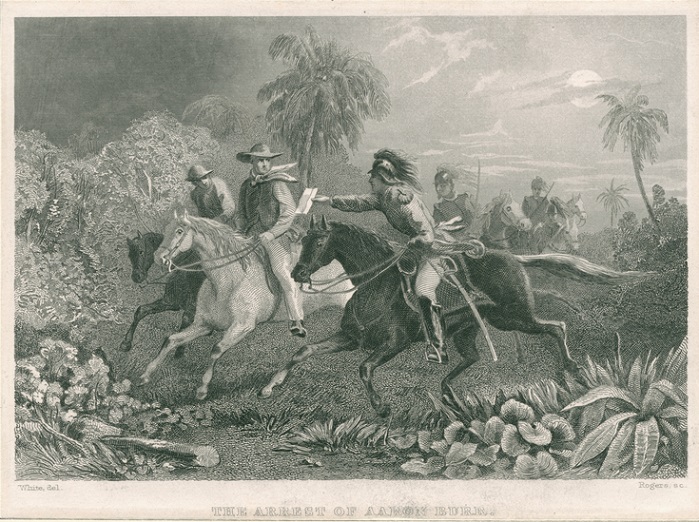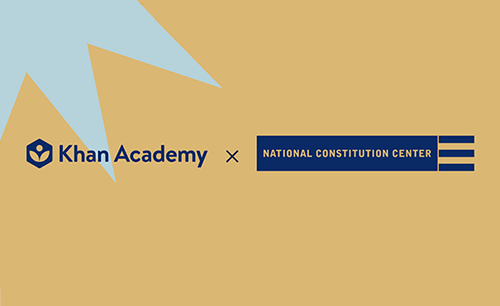By April 20, Secretary of Defense Pete Hegseth and Secretary of Homeland Security Kristi Noem are expected to make recommendations to President Donald Trump about invoking the Insurrection Act of 1807 at the southern border of the United States. What is the act and how did the law come into play?
 The Insurrection Act of 1807 is one of a series of laws that Congress has passed to allow the president to deploy the National Guard or federal armed forces to deal with “unlawful obstructions, combinations, or assemblages, or rebellion against the authority of the United States.” President Trump asked for the cabinet-level recommendations in an executive order issued on Jan. 20, 2025, to determine which actions “may be necessary to obtain complete operational control of the southern border, including whether to invoke the Insurrection Act of 1807.”
The Insurrection Act of 1807 is one of a series of laws that Congress has passed to allow the president to deploy the National Guard or federal armed forces to deal with “unlawful obstructions, combinations, or assemblages, or rebellion against the authority of the United States.” President Trump asked for the cabinet-level recommendations in an executive order issued on Jan. 20, 2025, to determine which actions “may be necessary to obtain complete operational control of the southern border, including whether to invoke the Insurrection Act of 1807.”
While the Insurrection Acts and related laws allow the president to use military forces in a limited fashion in domestic circumstances, another law passed by Congress serves as a counterbalance: the Posse Comitatus Act of 1878. Passed after Reconstruction, the act prevents the federal military from acting as a police force unless there is a clear grant of power from Congress, or such actions are “expressly authorized by the Constitution.”
The last use of the Insurrection Act was in May 1992, when President George H.W. Bush directed the use of 3,500 federal troops after California’s governor requested help when the National Guard could not contain riots related to the Rodney King case. In 1957, President Dwight D. Eisenhower sent federal soldiers under another statute to enforce the desegregation at Central High School in Little Rock, Ark. On other occasions, the president has directed the use of federal forces to contain an outright rebellion, labor disputes, race riots, and public protests.
The Constitution and Congressional Grants of Militia Powers
The founders had firsthand experience with the need to contain public disturbances in limited circumstances. The Articles of Confederation, which preceded the Constitution, lacked the ability for its decentralized government to initially deal with Shays’ Rebellion in 1786. At the Constitutional Convention in Philadelphia in 1787, the delegates sought to balance the need for stronger militias and a federal military force, with their fear of a standing army that would abuse its powers.
The Constitution gave overlapping powers to civilians to oversee military forces. Article I, Section 8 called for Congress “to provide for calling forth the Militia to execute the Laws of the Union, suppress Insurrections and repel Invasions” and “To provide for organizing, arming, and disciplining, the Militia, and for governing such Part of them as may be employed in the Service of the United States, reserving to the States respectively.” Article II, Section 2 established that the “President shall be Commander in Chief of the Army and Navy of the United States, and of the Militia of the several States, when called into the actual Service of the United States.”
The Constitution’s Article IV, Section 4 also made it clear that the federal government had a responsibility to protect states against “Invasion; and on Application of the Legislature, or of the Executive (when the Legislature cannot be convened) against domestic Violence.”
After the Constitution was ratified, Congress granted the president additional powers under the Militia Act of 1792 to temporarily “call forth such number of the militia of the state or states” at the request of state leaders. In 1794, President George Washington used the act to end the Whiskey Rebellion after negotiations failed with farmers protesting against taxes. Washington led a multi-state militia to western Pennsylvania to disburse the farmers. The Militia Act of 1795 gave the president more powers to call out the militia by eliminating time limits for their use in the field and removing the required consent of a federal judge before taking action to call out troops.
The Insurrection Act of 1807 came out of the need, in part, for President Thomas Jefferson to confront the actions of Aaron Burr, his former vice president. Burr was alleged to have organized an expedition to capture part of Jefferson’s Louisiana Purchase to help create a new country. The act allowed the president “in all cases of insurrection, or obstruction to the laws, either of the United States, or of any individual state or territory” to use the federal armed in addition to the militia “for the purpose of suppressing such insurrection, or of causing the laws to be duly executed.” Jefferson ordered Burr’s arrest, which was carried out by troops in Alabama.
The Militia and Insurrection Acts in Use
In July 1861, President Abraham Lincoln and Congress relied on acts to expand the president’s powers to deal with “the Suppression of Rebellion against and resistance to the Laws of the United States” during the Civil War. This revised version of the Militia Act of 1795 stated the president could have the militia “enforce the faithful execution of the laws of the United States.” The revised act was also used to send federal troops to suppress the 1863 draft riots in New York. In 1871, Congress revised the act to allow the president to use the militia and federal forces to guarantee the equal protection and citizenship rights granted to citizens under the 14th Amendment.
The Posse Comitatus Act of 1878 was a direct reaction to Reconstruction and the contentious presidential election of 1876. In the period after the Civil War, federal troops in the former states of the Confederacy had been used to enforce laws, and there were allegations the military helped some Republican-controlled government remain in place. As explained in a 2018 report from the Congressional Research Service, the Posse Comitatus Act outlaws the willful use of any part of the Army or Air Force as a “posse comitatus” to execute the law unless expressly authorized by the Constitution or an act of Congress.
Violations of the Posse Comitatus Act occur when federal armed forces take over tasks assigned to a civil government, or when federal armed forces perform tasks solely for purposes of civilian government. Also, civilian law enforcement is barred from "direct active use" of military investigators and the use of the military cannot "pervade” the activities" of the civilian law enforcement.
According to the CRS, clear exceptions to the Posse Comitatus Act exist where “Congress has delegated authority to the president to call forth the military during an insurrection or civil disturbance.” Such situations may include a request from a state for assistance, the need of the president to enforce a federal law, or a need to protect civil rights. Examples of these acts in use include the deployment of federal forces to help James Meredith to enroll as a student at the University of Mississippi in 1962, and President Lyndon Johnson’s use of the military to protect marchers in Selma, Ala., in 1965.
For now, it is not publicly known how President Trump would use his powers under the Insurrection and Militia acts at the southern border with Mexico if he chooses to do so. In March, The Washington Post reported the administration could deploy federal troops at a buffer zone near the border.
Scott Bomboy is the editor in chief of the National Constitution Center.






